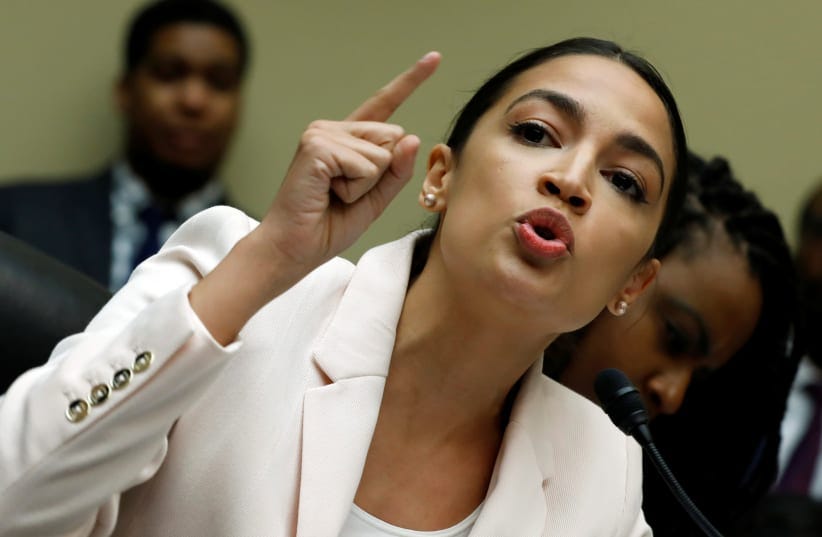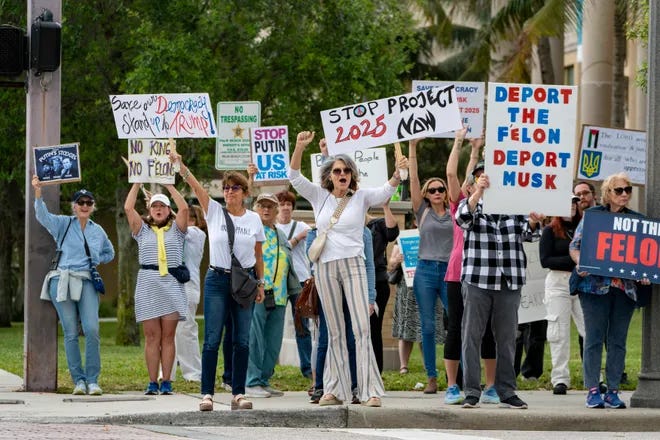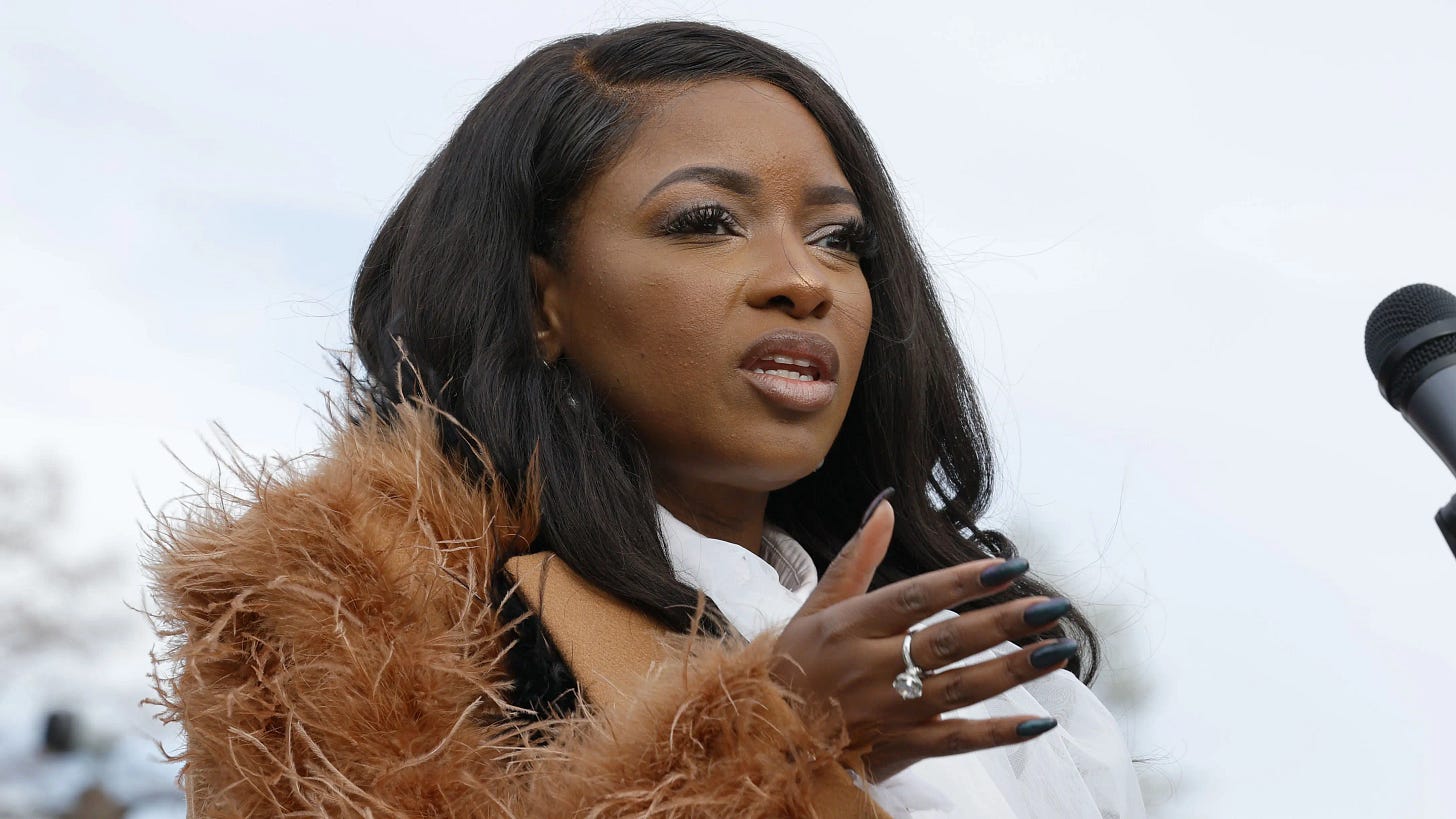Reclaiming the Narrative: How Democrats Can Rise to Meet the Moment
A bold strategy to unify the party, energize the base, and counter the MAGA movement with a vision of hope and justice for all Americans.
The Democratic Party in the United States is at a turning point. With a fractured base and growing frustration among progressives, the party faces mounting pressure to redefine its identity and reconnect with voters. Meanwhile, Republicans—particularly the MAGA movement—have mastered the art of delivering clear, emotionally charged messages that resonate with a wide audience, including young men who feel overlooked or alienated.
Within the Democratic Party, a divide is becoming more apparent. Leaders like Chuck Schumer and Hakeem Jeffries have stuck to traditional norms, while a new wave of progressives, including Alexandria Ocasio-Cortez and Jasmine Crockett, are calling for a bolder, more urgent approach. At the same time, the Democratic National Committee (DNC) is shifting gears, focusing on grassroots organizing and rapid-response strategies to counter Republican narratives.
Frustration among the Democratic base is palpable. Many voters feel disillusioned with the traditional leadership, accusing them of being out of touch with the urgency of the moment. There’s a growing demand for new voices—leaders who are willing to fight unapologetically for progressive values and meet the challenges of the current political climate head-on. Figures like Ocasio-Cortez, Crockett, and Maxwell Frost are increasingly seen as the future of the party, embodying the passion and authenticity that many believe the old guard lacks.
The stakes couldn’t be higher. To move forward, Democrats need to learn from history—both in the U.S. and abroad—about how to counter hard-right movements and authoritarian rhetoric. They must also craft a message that speaks directly to working Americans, independents, and young voters, offering not just policies but a vision of hope and belonging.
The Republican Messaging Machine
To understand how Democrats can reshape their messaging, it’s crucial to examine the success of the Republican Party, particularly the MAGA movement, in creating a cohesive and emotionally resonant narrative. Over the past decade, Republicans have demonstrated an unparalleled ability to unify their base, appeal to key demographics, and dominate the political narrative. Their success lies not just in their policies but in how they communicate them.
Emotional Resonance and Simplicity
The MAGA movement has mastered the art of delivering messages that are both emotionally charged and easy to understand. Slogans like “Make America Great Again” and “America First” tap into feelings of nostalgia, pride, and fear of change. These messages resonate deeply with voters who feel left behind by globalization and cultural shifts. By contrast, Democratic messaging often leans toward policy-heavy language that lacks the same emotional impact.
Targeting Disillusioned Demographics
Republicans have successfully brought young men aged 18-30 into their fold, particularly those who feel alienated or overlooked. Through social media, podcasts, and influencers, they’ve created a sense of community and belonging for individuals who might otherwise feel disconnected. This demographic, often labeled as "incels" or disenfranchised young men, has found validation and purpose within the MAGA movement.
A Robust Media Ecosystem
The Republican Party benefits from a decentralized yet cohesive media ecosystem. From Fox News to independent conservative influencers, their messaging is amplified across multiple platforms, ensuring it reaches a wide audience. This ecosystem allows them to control the narrative and respond quickly to political developments.
Framing and Scapegoating
A key strategy of the MAGA movement is framing issues in a way that aligns with their narrative. Economic struggles are often blamed on progressive policies, immigrants, or globalization, creating clear scapegoats for voter frustrations. This approach simplifies complex issues and provides voters with a tangible target for their grievances.
Community Building
MAGA rallies, online forums, and grassroots organizing have fostered a strong sense of community among supporters. This sense of belonging is a powerful motivator, encouraging loyalty and active participation in the movement.
Leveraging Disinformation
While controversial, the use of disinformation has been a significant factor in the Republican messaging strategy. By spreading false or misleading narratives, they’ve been able to sow doubt and confusion, undermining trust in institutions and opponents.
The Democratic Divide
Within the Democratic Party, a growing divide has emerged between the traditional “old guard” leadership and a new wave of progressive voices. This internal tension reflects broader debates about the party’s identity, strategy, and future direction. Understanding this divide is essential to crafting a unified message that resonates with a diverse and often fractured base.
The Old Guard: Tradition and Caution
Leaders like Chuck Schumer and Hakeem Jeffries represent the traditional wing of the Democratic Party. Their approach is rooted in institutional norms, emphasizing bipartisanship, measured rhetoric, and legislative negotiation. While this strategy has its merits, particularly in maintaining party unity and appealing to moderates, it has also drawn criticism for being too cautious and out of step with the urgency of the current political climate.
The old guard’s focus on decorum and incremental progress often clashes with the demands of a base that is increasingly frustrated by Republican obstructionism and the slow pace of change. This disconnect has fueled dissatisfaction among progressives and younger voters, who feel that the party’s leadership is not doing enough to address pressing issues like climate change, healthcare, and economic inequality.The New Wave: Boldness and Urgency
In contrast, figures like Alexandria Ocasio-Cortez, Jasmine Crockett, and Maxwell Frost represent a new generation of Democratic leaders who are unafraid to challenge the status quo. These progressive voices have gained national attention for their fiery rhetoric, grassroots activism, and willingness to confront both Republican policies and Democratic leadership when necessary.

Rep. Alexandria Ocasio-Cortez (D-NY) speaks during House Oversight and Reform Committee hearing (photo credit: YURI GRIPAS / REUTERS) This new wave of leaders has been particularly effective in energizing younger voters and marginalized communities. Their focus on bold, transformative policies—such as the Green New Deal, Medicare for All, and criminal justice reform—has resonated with a base that is hungry for change. However, their approach has also sparked debates within the party about the risks of alienating moderates and swing voters.
Bridging the Divide
The challenge for Democrats is to bridge the gap between these two factions and create a unified strategy that leverages the strengths of both. The old guard’s experience and institutional knowledge can complement the new wave’s energy and grassroots appeal. By finding common ground and crafting a cohesive message, the party can present a united front that appeals to a broad coalition of voters.
Lessons from History
Throughout history, hard-right movements have risen to prominence during times of economic uncertainty, cultural upheaval, and political polarization. However, these movements have also been defeated or marginalized through strategic messaging, grassroots organizing, and coalition-building. By examining these historical examples, Democrats can draw valuable lessons for countering the MAGA movement and reclaiming their narrative.
The New Deal Coalition (1930s-1940s)
What Happened: During the Great Depression, Franklin D. Roosevelt’s New Deal policies united a diverse coalition of working-class Americans, minorities, and progressives. By addressing economic inequality and providing tangible benefits, the Democratic Party became the champion of the common man.
Lesson: Focus on economic justice and policies that directly improve the lives of working Americans. A clear, unifying message centered on economic recovery can bring together disparate groups.Civil Rights Movement (1950s-1960s)
What Happened: The civil rights movement successfully challenged segregation and systemic racism through grassroots organizing, nonviolent protest, and moral appeals. Leaders like Martin Luther King Jr. framed their struggle as a fight for justice and equality, gaining widespread support.
Lesson: Moral clarity and grassroots activism are powerful tools for mobilizing support and countering divisive rhetoric. Democrats must articulate a vision of justice and equality that resonates across racial and economic lines, while fighting back against the “woke” label and dispelling the “boogie man” factor of so-called “wokeism”.
The Defeat of European Fascism (1940s)
What Happened: During World War II, Allied nations united to defeat fascist regimes in Germany and Italy. This victory was achieved through a combination of military action, propaganda, and a commitment to democratic values.
Lesson: A strong, unified front against authoritarianism is essential. Democrats must position themselves as the defenders of democracy, emphasizing the dangers of authoritarianism and the importance of protecting democratic institutions.
The Fall of McCarthyism (1950s)
What Happened: Senator Joseph McCarthy’s anti-communist crusade was ultimately discredited through public exposure of his tactics and the courage of individuals who stood up to him. The media played a crucial role in turning public opinion against McCarthyism.
Lesson: Exposing the tactics and falsehoods of hard-right movements can erode their support. Democrats must invest in rapid-response teams to counter disinformation and highlight the consequences of Republican policies.
European Left-Aligned Parties vs. Modern Authoritarianism
What Happened: In recent years, left-aligned parties in Europe have successfully countered the rise of authoritarianism by emphasizing shared values like democracy, equality, and social justice. They’ve also isolated far-right rhetoric through the "cordon sanitaire" approach, refusing to legitimize it through debate.
Lesson: Democrats can adopt similar strategies by framing their policies as a defense of American values and refusing to engage with extremist rhetoric on its terms.
The 10-Point Messaging Plan for the Future
To counter the cohesive and emotionally charged messaging of the MAGA movement, Democrats need to adopt a bold, unified strategy that resonates with working Americans, independents, and young men. This strategy must address the frustrations and aspirations of these groups while presenting a compelling vision for the future. Here’s a detailed plan:
Reclaim the Narrative with Emotional Resonance
What to Do: Democrats must craft messages that evoke pride, hope, and belonging, similar to the emotional appeal of MAGA slogans.
How to Do It:
Use simple, memorable slogans like "For Every Worker, Every Family" or "Building America Together."
Highlight personal stories of Americans benefiting from Democratic policies, creating a human connection.
Why It Works: Emotional resonance is key to inspiring action and loyalty. By tapping into shared values and aspirations, Democrats can rebuild trust and enthusiasm.
Focus on Economic Justice
What to Do: Center the message on economic policies that directly improve the lives of working Americans.
How to Do It:
Emphasize policies like raising the minimum wage, expanding healthcare access, and protecting unions and even non-union workers.
Frame these policies as a fight against corporate greed and for the dignity of every worker.
Why It Works: Economic struggles are a unifying concern across demographics. Addressing these issues head-on can bring together a broad coalition of voters.
Engage Young Men Through Community
What to Do: Create spaces where young men feel seen, valued, and part of a larger purpose.
How to Do It:
Launch mentorship and job training programs targeting young men in economically struggling areas.
Use social media platforms to foster online communities that promote Democratic values.
Why It Works: Many young men are drawn to MAGA because it offers a sense of belonging. Democrats can counter by offering a positive, inclusive alternative.
Build a Strong Media Ecosystem
What to Do: Develop a decentralized media network to amplify Democratic messaging.
How to Do It:
Partner with and invest in progressive influencers and micro-influencers, podcasters, and content creators who are trusted by their followers and often have a higher ability to reach audiences than traditional media sources.
Invest in grassroots media outlets that can counter conservative narratives.
Why It Works: A robust media ecosystem ensures that Democratic messages reach a wide audience and can compete with Republican narratives.
Reframe the Narrative
What to Do: Take control of the political narrative by framing Democrats as the party of action and Republicans as the party of obstruction.
How to Do It:
Highlight Republican failures to address key issues like healthcare, education, and climate change.
Use data and storytelling to show how Democratic policies have improved lives.
Why It Works: Reframing the narrative shifts the focus from partisan bickering to tangible results, appealing to independents and moderates.
Learn from European Left-Aligned Parties
What to Do: Adopt strategies used by European parties to combat authoritarianism.
How to Do It:
Use the "cordon sanitaire" approach to isolate far-right rhetoric, refusing to legitimize it through debate.
Emphasize shared values like democracy, equality, and social justice in all messaging.
Why It Works: European left-aligned parties have successfully framed themselves as defenders of democracy, appealing to a broad coalition of voters.
Invest in Grassroots Organizing
What to Do: Build a permanent grassroots infrastructure to mobilize voters year-round.
How to Do It:
Open local offices year-round to train and empower local organizers to engage with their communities.
Focus on voter registration drives and turnout efforts in swing districts.
Why It Works: Grassroots organizing has been a cornerstone of successful progressive movements throughout history.
Counter Disinformation
What to Do: Develop a rapid response team to combat misinformation and promote factual narratives.
How to Do It:
Use social media to quickly debunk false claims and provide accurate information.
Partner with fact-checking organizations to amplify their work and present factual evidence that directly debunks false claims and misinformation.
Why It Works: Disinformation has been a powerful tool for the far-right. Democrats need to neutralize its impact to regain trust.
Embrace Bold Leadership
What to Do: Elevate leaders who are unafraid to speak out and challenge the status quo.
How to Do It:
Support and empower messaging from candidates like AOC, Jasmine Crockett, and Maxwell Frost who energize the base and attract younger voters.
Encourage established leaders to adopt a more assertive and passionate tone.
Why It Works: Bold leadership inspires confidence and motivates voters to take action.
Create a Vision for the Future
What to Do: Articulate a clear and inspiring vision for America’s future.
How to Do It:
Focus on themes like innovation, sustainability, and opportunity for all.
Use storytelling to paint a picture of what a Democratic-led America looks like.
Why It Works: A compelling vision gives voters something to rally behind and believe in.
Using this 10-Point Messaging Plan, Democrats can reclaim the narrative and directly fight back against MAGA’s huge media ecosystem.
Choose The Right Messengers for the Moment
A successful messaging strategy requires the right messengers—leaders who can connect with diverse audiences, inspire action, and embody the values of the Democratic Party. These individuals must bridge the divide between the party’s progressive and moderate wings while appealing to working Americans, independents, and young men.
Progressive Firebrands
Alexandria Ocasio-Cortez (New York District 14):
AOC’s ability to energize younger voters and articulate bold progressive policies makes her a natural leader for this strategy. Her social media presence and grassroots appeal are unmatched.
Jasmine Crockett (Texas District 30):
Crockett’s fiery rhetoric and unapologetic stance against Republican policies resonate with working-class and minority communities. She’s a rising star who can inspire passion and urgency.Maxwell Frost (Florida District 10):
As the first Gen Z member of Congress, Frost has a unique ability to connect with younger voters and address issues like gun control and climate change.
Emerging Voices
Summer Lee (Pennsylvania District 12):
Lee’s focus on labor rights and racial justice positions her as a strong advocate for working Americans. Her grassroots organizing background adds credibility to her message.Jamaal Bowman (New York District 16):
Bowman’s emphasis on education reform and wealth inequality makes him a relatable and effective messenger for economic justice.Ritchie Torres (New York District 15):
Torres’s advocacy for LGBTQ+ rights and affordable housing appeals to urban and marginalized communities.
Established Leaders with Broad Appeal
Gavin Newsom (Governor of California):
Newsom’s high-profile battles with the Trump administration and his focus on progressive policies make him a compelling figure for national messaging.Gretchen Whitmer (Governor of Michigan):
Whitmer’s leadership during the pandemic and her focus on infrastructure and economic recovery have earned her national recognition. Her pragmatic approach appeals to moderates and progressives alike.Pete Buttigieg (Former Secretary of Transportation):
Buttigieg’s sharp intellect, calm demeanor, and ability to articulate complex issues in relatable terms make him a standout voice. His focus on infrastructure, climate action, and economic opportunity resonates across demographics.Wes Moore (Governor of Maryland):
As Maryland’s first Black governor, Moore’s focus on economic opportunity and education reform positions him as a unifying figure.
4. Grassroots and Community Leaders
Stacey Abrams (Georgia):
Abrams’s expertise in voter mobilization and grassroots organizing is invaluable for engaging disenfranchised communities.Keith Ellison (A.G. Minnesota):
As Minnesota’s Attorney General, Ellison has been a strong advocate for justice reform and holding corporations accountable.
Voices for Young Men
Cory Booker (Senator from New Jersey):
Booker’s charisma, emotional intelligence, and focus on justice and opportunity make him an ideal messenger for young men. His ability to connect on a personal level and inspire hope is a powerful asset.Eric Swalwell (California District 14):
Swalwell’s vocal criticism of the Trump administration and focus on gun control make him a relatable figure for younger voters.Greg Casar (Texas District 35):
A former labor organizer, Casar’s focus on workers’ rights and progressive policies makes him a strong voice for economic justice.David Hogg (Vice Chair of the DNC):
As a prominent gun control activist and survivor of the Parkland school shooting, Hogg has become a powerful voice for younger generations. His advocacy for common-sense gun reform and his ability to mobilize youth through social media make him an inspiring and relatable figure for young men.
These leaders represent a mix of progressive firebrands, pragmatic governors, and grassroots organizers who can collectively deliver a unified and emotionally resonant message. By leveraging their strengths and amplifying their voices, Democrats can build a coalition that reflects the diversity and aspirations of the American people.
A Path Forward
The Democratic Party stands at a critical juncture, facing both internal divisions and external challenges. To succeed in the current political climate, Democrats must embrace a bold, unified messaging strategy that resonates with working Americans, independents, and young men. This strategy must address the frustrations and aspirations of these groups while presenting a compelling vision for the future.
A key part of this transformation involves the “old guard” leadership recognizing that their time has passed. Leaders like Chuck Schumer and Hakeem Jeffries have played significant roles in the party’s history, but the current moment demands a new generation of voices who are in sync with the base and the needs of constituents. Figures like Alexandria Ocasio-Cortez, Jasmine Crockett, and Maxwell Frost are not just speaking to the frustrations of the electorate—they are meeting them head-on with passion, urgency, and authenticity. For the Democratic Party to thrive, the old guard must step aside and allow these leaders to take the reins, crafting a message that reflects the energy and diversity of the party’s base.

By learning from history and adopting lessons from European left-aligned parties, Democrats can counter the rise of authoritarianism and reclaim their narrative. The party must elevate leaders who inspire confidence and connect with diverse audiences, while investing in grassroots organizing and a robust media ecosystem. Most importantly, Democrats must articulate a message of hope and belonging that speaks to the frustrations and aspirations of all Americans.
The stakes couldn’t be higher. The Democratic Party has the opportunity to not only defeat the MAGA movement but also to build a coalition that reflects the values and diversity of the American people. By taking bold action and embracing a new generation of leadership, Democrats can chart a path forward that ensures a brighter future for all.









Jamaal Bowman was defeated and is no longer a Rep.
It is my opinion that the Democrat party has been infiltrated by the GOP.
https://torrancestephensphd.substack.com/p/has-the-dnc-been-infiltrated-by-the